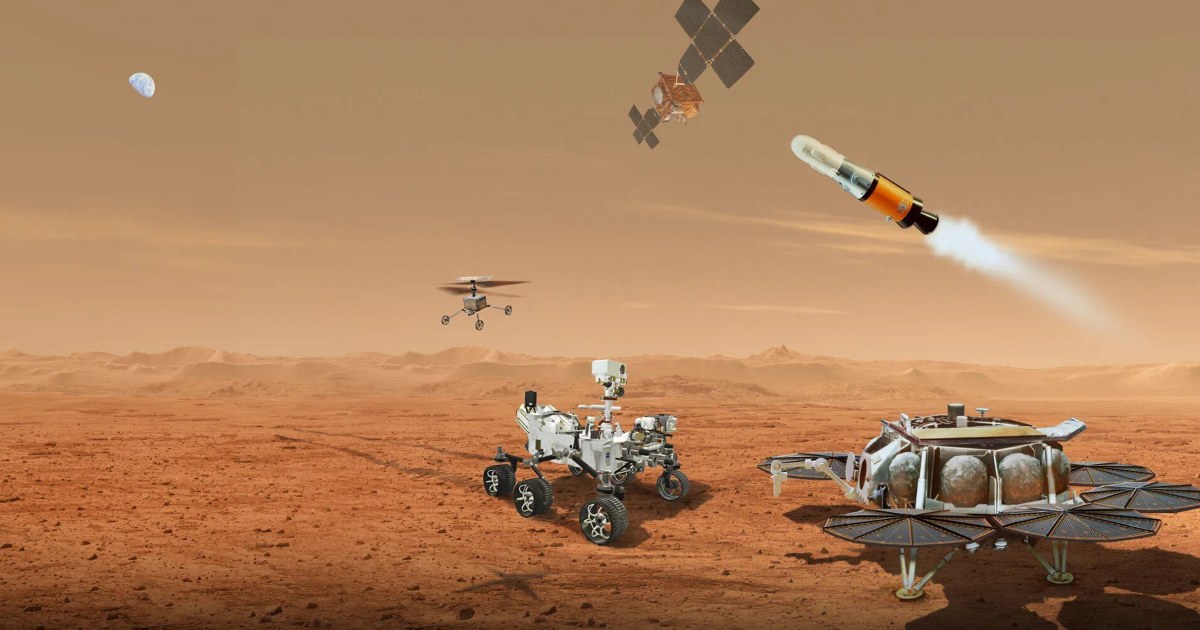NASA’s Bold New Strategy for Returning Mars Samples: A Comprehensive Overview
NASA has undertaken a daring and ambitious mission: the Mars Sample Return (MSR) project. This initiative aims not only to collect samples from the Martian surface but also to bring them back to Earth for detailed analysis. Recently, NASA has revamped its approach to this monumental endeavor, introducing a new strategy designed to enhance efficiency and effectively tackle existing challenges. Here’s what you need to know about NASA’s bold new strategy for returning Mars samples.
Understanding the Mars Sample Return Mission
The Mars Sample Return mission is a collaborative effort primarily between NASA and the European Space Agency (ESA). The mission’s ultimate goal is to collect Martian soil and rock samples using a series of robotic missions and return them to Earth, where scientists can study them in detail, unlocking secrets about Mars’s geology and potential for past life.
Originally proposed in the early 2000s, the mission has seen numerous revisions and updates. The current strategy emphasizes a streamlined approach to enhance the feasibility of returning samples effectively and safely. The mission involves multiple components:
- Sample Collection: The Perseverance rover, which landed on Mars in February 2021, is responsible for collecting and storing rock and soil samples in sealed tubes.
- Sample Retrieval: A future lander will retrieve these samples and transfer them to an ascent vehicle, which will launch them into orbit around Mars.
- Return to Earth: A spacecraft will rendezvous with the ascent vehicle in Martian orbit, capture the sample container, and return it to Earth.
Challenges in Sample Return Missions
NASA’s previous plans for the MSR mission faced several challenges, including budgetary constraints, technical complexities, and the inherent risks of interplanetary missions. Some of the key challenges include:
- Technical Feasibility: Designing robust systems that can operate in the harsh Martian environment is no small feat. Each component must withstand extreme temperatures, dust storms, and radiation.
- Budget Constraints: As with many government-sponsored missions, funding is often a limiting factor. Ensuring the mission stays within budget while still achieving its ambitious goals is a delicate balancing act.
- Coordination Among Agencies: The collaboration between NASA and ESA adds layers of complexity. Ensuring seamless communication and coordination is vital for mission success.
NASA’s New Strategic Approach
In light of these challenges, NASA’s revamped strategy for returning Mars samples focuses on enhancing efficiency and reducing risks. Here are several key elements of the new strategy:
- Streamlined Mission Architecture: NASA has revised the mission architecture to simplify operations and minimize the number of launches required to achieve the mission goals. This streamlined approach is aimed at reducing costs and the timeline for the mission.
- Increased Collaboration: By strengthening ties with international partners like ESA, NASA aims to pool resources and expertise, which enhances innovation and problem-solving capabilities.
- Technology Development: The agency is investing heavily in developing new technologies that will improve the reliability of sample collection and retrieval processes. This includes advancements in robotics and autonomous systems.
The Importance of Mars Sample Return
The significance of the Mars Sample Return mission cannot be overstated. Scientists believe that the samples collected could provide invaluable insights into the planet’s history, climate, and potential for harboring life. Specifically, the mission aims to:
- Investigate Past Life: Analyzing Martian samples in Earth’s laboratories may reveal signs of ancient microbial life, which could reshape our understanding of life’s existence beyond Earth.
- Understand Mars’s Geology: The samples will help scientists better understand the planet’s geological processes and its evolution over billions of years.
- Prepare for Future Human Missions: Insights gained from the samples could inform future human exploration, helping ensure the safety and success of astronauts on Mars.
The Timeline for the Mars Sample Return Mission
As with any ambitious space mission, timelines can change due to various factors. However, current projections suggest that the first phase of the Mars Sample Return mission, which includes the Perseverance rover’s ongoing sample collection, is well underway. Following this, the sample retrieval and return missions are expected to occur in the late 2020s to early 2030s.
NASA is committed to transparency and regularly updates the public on the mission’s progress, allowing enthusiasts and scientists alike to stay informed about this exciting journey to Mars.
Public Interest and Engagement
The Mars Sample Return project has garnered significant public interest, with many people eager to learn more about the mission and its implications. NASA has actively engaged the public through educational outreach, social media campaigns, and interactive online platforms, making it easier for everyone to follow the mission’s developments.
Moreover, the agency encourages citizen science initiatives that allow amateurs and professionals to analyze data collected from Mars, fostering a sense of community and shared discovery.
Conclusion: A New Era of Exploration
NASA’s bold new strategy for returning Mars samples represents a significant step forward in our quest to understand the Red Planet. By addressing past challenges and embracing innovative solutions, NASA is poised to unlock the mysteries of Mars and potentially answer fundamental questions about life beyond our home planet.
As we look toward the future, the Mars Sample Return mission stands as a testament to human ingenuity and our relentless pursuit of knowledge. With each discovery, we come closer to understanding the universe and our place within it, making this mission not just a scientific endeavor but a beacon of hope for humanity.
See more Future Tech Daily

